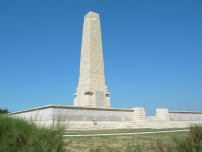| First Name: | Frederick Jesse | Last Name: | STEVENS | |
|---|---|---|---|---|
| Date of Death: | 26/04/1915 | Lived/Born In: | St Johns Wood | |
| Rank: | Private | Unit: | Scottish Borderers1 | |
| Memorial Site: | Helles Memorial, Gallipoli | |||
Current Information:
Age-22 6, Woronzow Road, St John's Wood
Gallipoli 1915 On 25 April, 1915, British, Australian and New Zealand forces landed on the Gallipoli peninsula. The plan was that these forces would soon defeat a demoralised Turkish army, knock Turkey out of the war, open up the Mediterranean to the Russian navy and threaten Austro-Hungary from the south.None of these things were achieved despite nine months of hard fighting in terrible conditions. It was a heroic failure. The 29th Division and the Royal Naval Division landed at five separate beaches around Cape Helles. Some were not defended, others were fiercely contested. Some ground was gained but within days the familiar pattern of trench warfare had set in. A similar pattern emerged further north where the ANZACS landed. The Turkish soldiers were much tougher fighters than had been given credit for and they were of course fighting an invasion of their homeland. The terrain, a series of steep rocky ridges and deep gullies made the fighting much more difficult and during the hot summer of 1915, the flies arrived in biblical proportions. Another seven British divisions were sent to Gallipoli during the summer but little or no progress was made. In the end, a new Commander was appointed and plans to evacuate the entire force were drawn up. By January 1916, all British, Australian and New Zealand forces had left Gallipoli, leaving only behind the dead, over 56,000 of them. On 25th April 1915, the 1st Scottish Borderers battalion of 87 Brigade, 29th Division landed unopposed at Y Beach on the Helles peninsular and took up positions at the top of the cliffs. By this time the Turks had appeared on the scene and began firing on them as they entrenched. This was followed by a number of Turkish infantry attacks during the rest of the day and through the following night. The next day, 26th April, the situation had not improved and to add to their woes their own shells, fired by the Royal Naval gunners, were falling short and causing additional casualties. 1st Scottish Borderers managed to maintain their positions with some difficulty until the order came in the afternoon to evacuate Y Beach. They made their way down from the cliffs and were picked up by Royal Naval craft. One of their casualties was Frederick Stevens. |
||||
| « Back to Search Results | ||||
| If you think any of the information shown here is incorrect, Click Here to submit your amends and comments | ||||




